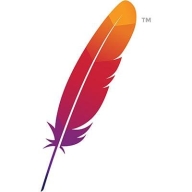


Find out what your peers are saying about Oracle, Apache, Red Hat and others in Application Server.



IBM WebSphere Application Server (WAS) is a middleware platform developed by IBM. It provides a range of services and tools to help organizations develop, deploy, and manage Java-based applications. WAS is part of IBM's WebSphere product family and provides a secure, scalable, and highly available platform for developing and running web-based applications. WAS provides a secure, scalable, and highly available platform, making it an attractive solution for organizations looking to develop and deploy enterprise-grade applications.
IBM WebSphere Application Server Features
IBM WebSphere Application Server has many valuable key features. Some of the most useful ones include:
IBM WebSphere Application Server Benefits
There are many benefits to implementing IBM WebSphere Application Server. Some of the biggest advantages the solution offers include:
Reviews from Real Users
IBM WebSphere Application Server is a solution that stands out when compared to many of its competitors. Some of its major advantages are that it is stable, supports many languages, and is resilient.
Princewill O., Head Banking Application Customization and Reporting at a financial services firm, states, “[The solution is] very stable, supports many languages, and helpful for faster time to market.”
"What's most valuable in IBM WebSphere Application Server is its resilience. When you use the solution, you know that after the communication has been done, there will be no doubt that the data has reached its destination,” says Nicolae C., System and Solutions Architect at Seidor.
Another PeerSpot reviewer, an Enterprise Technical Leader at a tech services company mentions, “[It is an] enterprise-level product with extensive console capabilities, including the ability to control multiple JVM containers.”
Oracle Fusion Middleware is the digital business platform for the enterprise and the cloud. It enables enterprises to create and run agile, intelligent business applications while maximizing IT efficiency through full utilization of modern hardware and software architectures.
Tomcat is a reliable and efficient web server, popular for hosting and running Java-based applications. It is praised for its scalability, compatibility with different operating systems and development frameworks, and its ability to handle heavy workloads.
Users appreciate Tomcat's ease of use, robust performance, reliable server functionality, seamless integration with various platforms, extensive documentation, and strong community support.